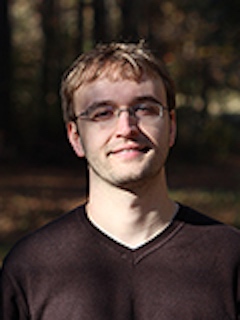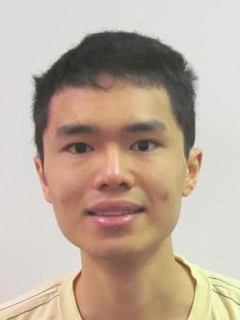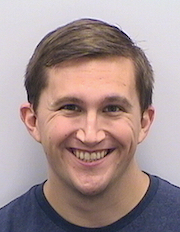WHO WE ARE
Bob Beichner
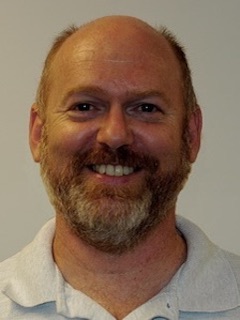
Professor Beichner received his PhD in 1989 from the State University of New York at Buffalo and joined the NC State Physics Department in 1992 as an Assistant Professor. He advanced through the professorial ranks and was named an Alumni Distinguished Undergraduate Professor in 2003.
He invented the popular Video-Based Lab (VBL) pedagogy, where students examine video clips of motion and watch synchronized kinematics graphs. As part of that effort he created the Test of Understanding Graphs in Kinematics, used by numerous teachers and researchers and serving as a model for similar conceptual assessment instruments. Dr. Beichner and his students have written and evaluated a series of these tests that are in use around the globe. For much of his career he has focused his attention on redesigning introductory physics education. His work laid the foundation for research done on active learning spaces. He initiated the SCALE-UP (Student Centered Active Learning Environment with Upside-down Pedagogies) project in the mid 1990s. This approach has led to changes in classrooms around the world, at institutions ranging from middle schools and high schools to MIT. SCALE-UP has been adopted at hundreds of universities and middle/high schools and had spread to content areas ranging from archeology to zoology.
Beichner has received numerous teaching awards and is a member of NC State's Academy of Outstanding Teachers. He received the Ohaus Award for Innovation from the National Science Teachers Association. He was named the 2009 North Carolina Professor of the Year by the Carnegie Foundation for the Advancement of Teaching and received the 2010 UNC System’s Board of Governors Award. Beichner was named the 2010 National Undergraduate Science Teacher of the Year by the Society of College Science Teachers and the National Science Teachers Association. In 2011 he was awarded the McGraw Prize, the premier honor in the field of education. He was also honored by Congress as noted in the US Congressional Record of September 29, 2011. He is a Fellow of the American Physical Society, the American Association for the Advancement of Science, and the American Association of Physics Teachers. In 2015 he was only the second individual to receive the American Physical Society’s Award for Excellence in Physics Education, which is normally only given to groups or large projects. In 2018 he began a three-year phased retirement program.
Here is a link to more information.
Michael Paesler
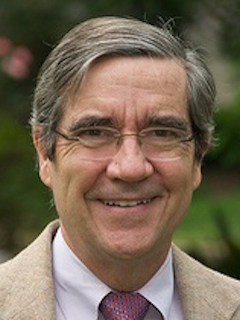
Professor Paesler (recently retired) earned his BA degree at Beloit College and his PhD from the University of Chicago in 1975. His PhD experimental research on disordered solids was undertaken in the laboratory of Hellmut Fritzsche. In 1976 he was a Guest Scientist at the Max- Planck-Institut für Festkörperforschung in Stuttgart, working with Professor Hans Queisser on the photo-Hall effect in crystalline gallium arsenide. Thereafter he assumed a position as a Post- doctoral Research Fellow in the Division of applied Sciences at Harvard University working with Professor William Paul studying hydrogenated amorphous silicon. Professor Paesler came to NC State in 1980 where he is now Professor Emeritus. From 1997 to 2005 he served as the Director of Graduate Programs. From 2005 to 2012 he served as Head of the department. Professor Paesler's undertakes research in the department's Physics Education Research program. In an effort supported by NC State University's Large Course Redesign program and the NSF Transforming Undergraduate Education in STEM Disciplines Program, his team studied the teaching laboratory in elementary physics courses. He and his graduate students investigated the use of so-called "kitlabs" as an alternative for traditional in-lab teaching systems. The study also encompassed the use of personal electronic equipment (e.g. smart-phones, tablets and laptops) as data-taking and manipulating devices.
Here is a link to more information.
Mike was born in Columbus, NJ and graduated from Juniata College in Huntingdon, PA in May 2009 with a BS degree in Physics and a minor in Math. He then got a MEng degree from Penn State's Graduate Program in Acoustics. His research involved designs for wideband tonpilz trandsucers. During his tenure at Penn State, Mike began making educational videos on the science of acoustics for a general audience and SCALE-UP classrooms. In the fall of 2014, Mike began his graduate studies at NC State, coming back to physics after 5 years as an acoustician. The PER group brought him to NC State as his interests lie in transforming education through technology and the internet. He is working on “A comparison of graphical representations of E&M plane waves.”
William has recently begun his research.
Nick received a B.S. degree in Physics and Mathematics from the University of New Hampshire. He then got a M.S in Physics from Virginia Tech, where his research focused primarily on String Phenomenology. After a brief stint away teaching English in Japan, followed by introductory physics for life scientists at Virginia Tech, Nick was attracted to NC Sate by the PER group, where he is working to improve the curriculum in upper division physics courses, specifically introductory modern physics.
Ph.D. Level:
David S. Abbott, NSF Fellow, defended dissertation July 2003, ”Assessing Student Learning About Measurement and Uncertainty.” Now Instructional Support Specialist at State University of New York-College at Buffalo.
Rhett Allain, NSF Fellow, defended dissertation July 2001, "Investigating the Relationship between Student Difficulties with the Concept of Electric Potential and the Concept of Rate of Change.” Now Associate Professor at Southeastern Louisiana University, author for Wired magazine, and technical consultant for the MacGyver television program.
Colleen Lanz Countryman, defended dissertation March 2015, “The Educational Impact of Smartphone Implementation in Introductory Mechanics Laboratory Classes.” Now Assistant Professor of Physics at Ithaca College.
Melissa H. Dancy, NSF Fellow, defended dissertation August 2000, “Effect of web-delivered animations for standardized conceptual exams.” Now Lecturer at University of Colorado.
Duane L. Deardorff, defended dissertation October 2001, “Introductory Physics Students’ Treatment of Measurement Uncertainty.” Now Director of Undergraduate Laboratories at University of North Carolina-Chapel Hill.
Lin Ding, defended dissertation May 2007, “Evaluating student understanding of energy in calculus-based introductory physics classes.” Now Assistant Professor at The Ohio State University.
Paula V. Engelhardt, defended dissertation May 1997, “Examining students’ understanding of direct current electrical circuits through multiple choice testing and interviews.” Now Associate Professor at Tennessee Technical University.
Kathleen Foote, defended dissertation March 2011, “Characterizing instructional implementations of SCALE UP and its effect on student performance and participation, especially for underrepresented groups.” Now Professional Teaching Fellow at the University of Auckland, New Zealand.
Jon D. H. Gaffney, defended dissertation March 2010, “Exploring student application of deductive reasoning resources in a physics context.” Now Assistant Professor at Eastern Kentucky University.
Dana Gierdowski, defended non-physics dissertation March 2013, “Geographies of a Writing Space: A Study of a Flexible Composition Classroom.” Now Teaching Assistant Professor at North Carolina State University.
Mary Hing-Hickman (committee located at Old Dominion University), defended dissertation March 2011, “Student understanding of vector use in introductory physics.” Science Teacher with Norfolk Public Schools.
Matthew Kohlmyer, defended dissertation March 2005, “Student performance in computer modeling and problem solving in a modern introductory physics course.” Now Senior Instructional Content Developer at Cengage Learning.
Mary Bridget Kustusch, defended dissertation March 2011, “Student understanding of cross products in physics.” Now at Assistant Professor DePaul University.
Brandon Lunk, defended dissertation May 2012, “Novice implementation of the Impulse-Momentum Theorem in VPython Programs.” Now Lecturer at Texas State University.
Terrance P. Maher, defended non-physics dissertation March 2010, “Factors influencing new teachers’ implementation of inquiry-based instruction.” Now Physics Instructor at Fayetteville Technical Community College.
Jeanne Morse, defended dissertation June 2005, “Effect of simulations in student understanding of electric field concepts.” Now Associate Professor at Sandhills Community College.
Jeffery Polak (ABD), under advisement until 2013, “Student understanding of integration in electric field problems.” Now Instructor at University of Southern Indiana.
Evan Richards, defended dissertation March 2010, “Student cognition while using examples.” Now faculty member at Lee College.
Sorangel Rodriguez, defended non-physics dissertation November 2012, “Development of an electrochemistry teaching sequence using a phenomenographic approach.” Professional Lecturer at American University.
Joan E. Rogue-Peña, under non-physics advisement 2009-present, “Chemical education research.”
Kathleen Ryker, defended non-physics dissertation March 2014, “An Evaluation of Classroom Practices, Inquiry and Teaching Beliefs in Introductory Geoscience Classrooms.” Now Assistant Professor at Eastern Michigan University.
Holly K. Schlitz, defended non-physics dissertation April 2013, “Promoting visualization skills with deconstruction through physical models and complex visual activities” Now Chemistry Instructor at Longleaf School of the Arts.
Aaron P. Titus, defended dissertation July 1998, “Effectiveness of web-based delivery of animations and videos.” Now a Professor and Department Head at High Point University.
Shawn Weatherford, defended dissertation March 2011, “Student learning of physics via minimally working computer programs.” Now Assistant Professor at St. Leo College.
Meghan Westlander, defended dissertation October 2014, “The Issues Framework: Situating Graduate Teaching Assistant-Student Interactions in Physics Problem Solving.”
Bin Xiao, defended dissertation June 2016, “Examining End-of-Chapter Problems Across Editions of an Introductory Calculus-Based Physics Textbook.”
M.S. Level:
Kimberly D. C. Benjamin, defended thesis October, 1998, “Student understanding of graphical representations of kinematics.”
Carlos Curto, defended non-physics thesis March 2001, “Towards an integral solution of rate understanding.”
Daria Marley, defended non-physics portfolio 2008, non-thesis option. Now Education Management Professional.
Scott F. Schultz, (committee), defended thesis 1993, “Incorporating the microcomputer in high school physics as an educational tool.” Now Professor and Director of the STEM Talent Institute at Delta College.
Elizabeth Wolfe (external reviewer at University of Victoria, BC, Canada), defended thesis April 2008, “Evaluating the use of the SCALE-UP teaching methodology for an undergraduate database systems course.” Now Quality Assurance Analyst at E-xact Transactions.
Undergraduates:
Ashley Parham, 2002, Shaw University, NSF’s Research in Undergraduate Education program, studies of success rates of women and minorities in different physics classrooms.
Geraldine Cochran, 2003-2005, Chicago State University, NSF’s Minority Graduate Education Intensive Research Experience program, development of a diagnostic instrument for geometrical optics concepts. Now Associate Director, Multicultural Center for Academic Success, RIT.
Mark Darby, 2002-2003, NCSU, NSF’s Minority Graduate Education Intensive Research Experience program, studies of group effects in the SCALE-UP classroom.
Maurice McKinney, 2004-2205, NCSU, revision of a test of kinematics graph interpretation.
Lillian Soliday, 2014, NCSU, qualitative data categorization
Former Faculty Members:
John Risley, passed away April 5, 2013. He founded WebAssign and mentored many students and faculty.
Bruce Sherwood, Professor Emeritus of NCSU Physics.
Ruth Chabay, Professor Emerita of NCSU Phhyscis. High Point University.
John Gastineau, Staff Scientist and Partner, Vernier Software & Technology.
Sabbatical and other Long-term Visitors/Mentees:
Rice Strange, 2005-2007, Northwest Guilford High School, Greensboro, NC.
Elizabeth Suber, 2003-2005, Leesville Road Middle School, Raleigh, NC.
Pamela Lovin, 2001-2003, Leesville Road High School, Raleigh, NC.
Chuck Britton, 2000, North Carolina School of Science and Math, Durham, NC.
Larry Martin, 1997-1999, North Park College, Chicago, Il.
Zena Poulli, 1997, Fulbright Scholar, Administration at Frederick University, Cyprus.
Wolfgang Christian, 1996-97, Faculty Emeritus of Davidson College, Davidson, NC.
Michael Sobko, 1996-97, Sheridan College, Brampton, Ontario, Canada.
Binghua Zhang, 1996-1999, Jiangsu Radio and TV University, Nanjing, China.
Post-Doctoral Scholars:
Scott W. Bonham, NSF Fellow, under advisement 1997- 2001, “Educational impact of World Wide Web use for delivery of novel physics problems.” Now Associate Professor and Faculty Teaching Fellow at Western Kentucky University.
Vincent Kuo, under advisement 2004-2006, “PER-CENTRAL Project.” Now Teaching Professor and Associate Director of the Center for Engineering Education at Colorado School of Mines.
Avi Marchevka, under advisement 2001-2003, “SCALE-UP Development and Dissemination.” Now at Ariel University, Israel.
Jeffery M. Saul, under advisement 1998-2000, "Evaluation of the SCALE-UP Project." Now STEM Education and Research Consultant at Tiliadal STEM Education Consulting.
Tae-Sun Kim, under advisement 2004-2005, "Student understanding of kinematics graphs." Now at Korean Office of Education.

